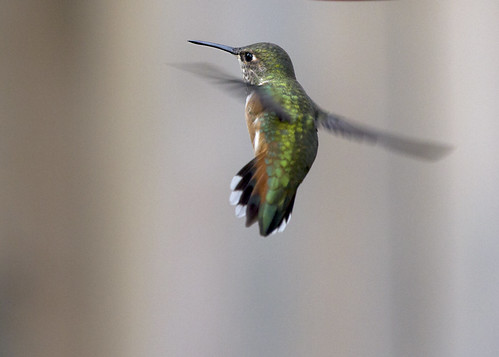And just like that, summer is over. I spent it immersed in ruby-throated hummingbird banding. Several of my weekends I headed north to Rusk and Washburn counties in northwestern Wisconsin where I power banded 2-3 days, banding 3-4 hours a stretch in the mornings and early evenings, Friday night through Sunday morning. When I wasn't banding I was replenishing my band supply, hand-snipping and forming each band.
From mid-June to late August, I banded over 800 ruby-throated hummingbirds in Wisconsin (mostly) and Michigan!
 |
| Ruby-throated Hummingbird, HY male on Royal Catchfly |
The hummingbird banding season is now winding down. During the past week, I've finally had the chance to admire the few ruby-throats residing in my own backyard. Fall migration is upon us. Outside of my own backyard I've not witnessed much of it, which is entirely fine by me (finally shedding my birder identity?).
 |
| Ruby-throated Hummingbird, HY (hatch year) male patrolling his territory |
I've found the hatch year (HY) ruby-throats to be more confiding and curious than the adults. Capturing images of the young hummingbirds is fairly easy compared to the wary adults. I still have an adult male visiting my yard inconsistently, but his visits are brief and rarely involve nectaring at my flowers. He has not been cooperative for photos. It has been my challenge to capture a decent image of an adult male ruby-throated hummingbird. Perhaps one of these years.
 |
| HY Ruby-throated Humming visiting Red Alert Phygelius hybrid |
 |
| Ruby-throated Hummingbird, HY male visiting Red Alert Phygelius hybrid |
Last November I was gifted some Royal Catchfly plants by the hosts of the first rufous hummingbird I banded in Wisconsin. Up until a two weeks ago, I had written off the plants as not having survived being planted so late in the season in last year. To my delight I discovered all three plants hidden and blooming among some of my other perennials that were crowding out this favored hummingbird plant. The hummingbirds immediately took to the blooms upon my day-lighting them.
 |
| Ruby-throated Hummingbird HY male at Royal Catchfly |
 |
| Ruby-throated Hummingbird HY male at Royal Catchfly |
While patiently staking out my hummingbird plants for photos of nectaring hummingbirds, this Cape May Warbler paid a visit. My first fall migrant of the season! Despite having a small urban backyard, migrating Cape May warblers seem to be a regular visitor annually.
 |
| Cape May Warbler |
 |
| Cape May Warbler |
Black and Blue Salvia is another top tier favorite plant for the hummingbirds and their host gardeners.
This Dropmore Scarlet Honeysuckle is a recent addition to my garden. I picked it up at the impressive
Northern Exposure Greenhouse and Garden Center in Boulder Junction en route home from hummingbird banding a few weekends ago. It was an instant hit with the hatch year ruby-throats.
They had not been visiting my lantana flowers until I moved the plant from the ground to a stand four feet off the ground. By simply elevating this potted plant, the hummers began visiting it regularly.
Certain Mondarda species such as this Wendy's Wish serve as magnets for nectaring hummingbirds. Unfortunately the native species that grows in Wisconsin's prairies is not a flower the hummingbirds will frequent.
 |
| Wendy's Wish Monarda species |
By month's end, my resident Ruby-throated hummingbirds will depart for their wintering grounds in Central America. It's been a whirlwind but fun season despite the little time I've had in my yard to enjoy them. I hope to capture some more moments with these delightful creatures before they leave.
 |
| King of the planter! |
Their departure will usher in the exciting season of "winter hummingbirds" when rufous and Anna's hummingbirds migrate through Wisconsin. Fall is also the time for vagrant hummingbirds to appear! Will this year yield another Mexican violetear (formerly known as the green violetear) or perhaps a first record blue-throated hummingbird for Wisconsin? I'll be keeping my feeders cleaned and filled and the yard littered with red magnets in hopes of attracting one of Wisconsin's rare hummingbirds! It was not too long ago, October of 2014, that I was fortunate to attract this female rufous hummingbird to my yard. The way time is moving and circumstances have changed, that seems like a life time ago... I'm looking forward to what the future and changing seasons will bring!














No comments:
Post a Comment